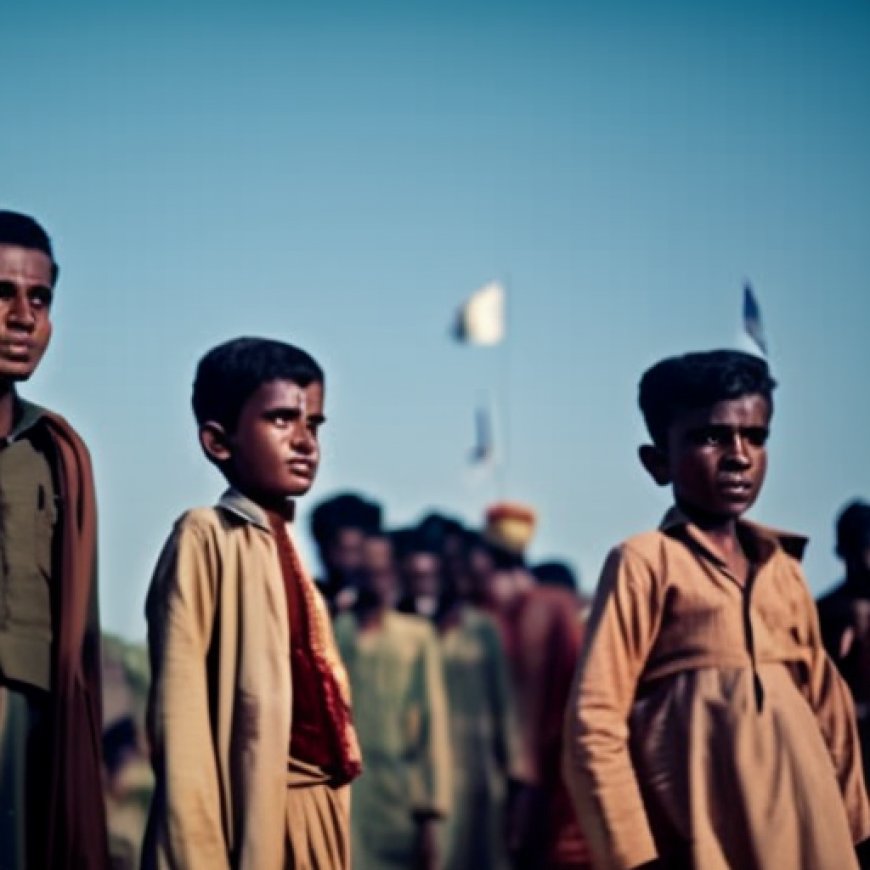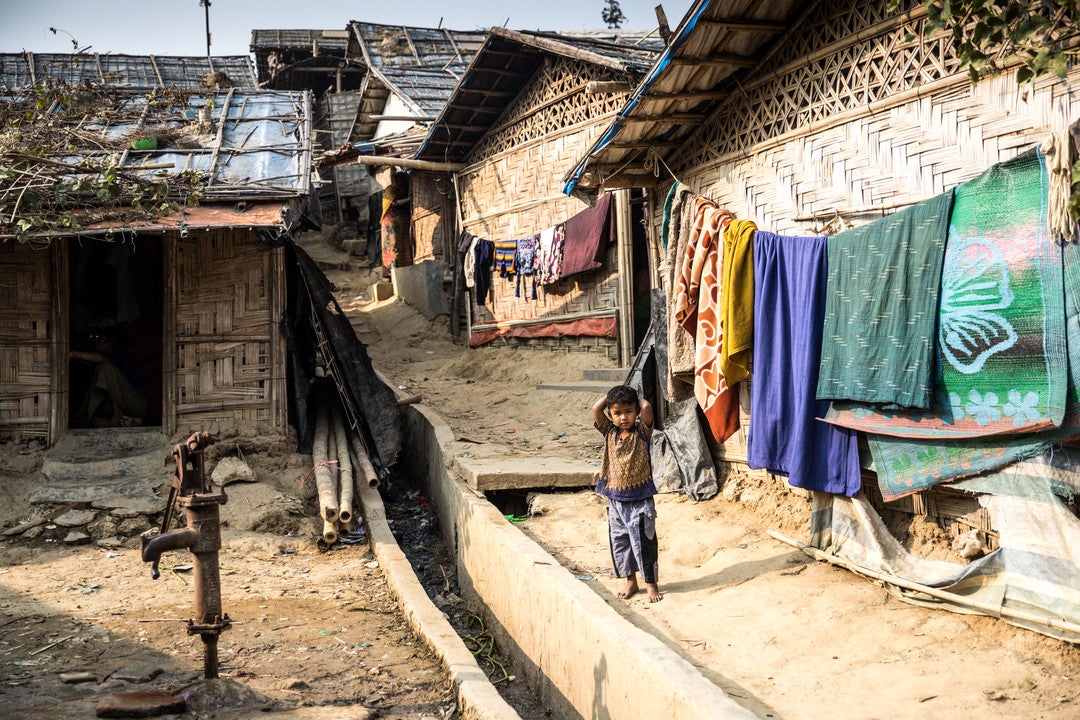The Rohingya refugee crisis: long after the headlines have faded –
The Rohingya refugee crisis: long after the headlines have faded - CARE Stories


Ensuring Sustainable Development Goals (SDGs) for Refugees

To ensure refugees continue to receive the necessary level and quality of services, aid agencies, humanitarian organizations, and the international community must reconsider their strategies. CARE is committed to actively participating in this conversation, focusing on meeting the basic needs of refugees and ensuring a safe environment for women in the deteriorating camp conditions.
CARE recognizes the importance of the Sustainable Development Goals (SDGs) in addressing the challenges faced by refugees. By aligning our efforts with the SDGs, we can work towards achieving a more sustainable and inclusive future for all.
Gender-Based Violence and Community-Based Protection
With limited funds, CARE is concerned about the potential increase in gender-based violence. Protection is often not prioritized at the same level as food, water, sanitation, and health. To address this issue, we must strengthen community-based protection mechanisms. This includes engaging men in discussions about their role in preventing violence, organizing communities to establish referral pathways, implementing case management systems, and providing community counseling.
- Engage men in discussions on preventing gender-based violence
- Establish referral pathways for survivors of violence
- Implement case management systems
- Provide community counseling services
Educating adolescent girls is crucial in providing them with skills for a better future and reducing their vulnerability to violence, harassment, and early marriage.
Challenges in Water and Food Management
As the refugee population continues to grow, it is essential to reassess water and sanitation management. The reliance on deep tube wells as a water source is reaching its limits. Studies indicate that these wells are putting significant stress on local groundwater, which may lead to water shortages if the current course is maintained.
Additionally, food ration allocations have been reduced from $12 to $8 per person per month. This emphasizes the need to increase the Rohingya community’s participation in income-generating activities, skills development, and connecting them with local markets. Advocacy and negotiations with the Government of Bangladesh will be necessary to achieve these goals. These skills will also be valuable for the refugees whenever repatriation back to Myanmar occurs.
- Increase Rohingya community’s participation in income-generating activities
- Provide skills development opportunities
- Connect refugees with local markets
- Advocate and negotiate with the Government of Bangladesh
CARE remains dedicated to working towards the SDGs and ensuring a sustainable future for refugees. By addressing the immediate needs of refugees while also focusing on long-term solutions, we can create lasting change and improve the lives of those affected by displacement.
SDGs, Targets, and Indicators
-
SDG 5: Gender Equality
- Target 5.2: Eliminate all forms of violence against all women and girls in the public and private spheres
- Indicator: Increase in community-based protection measures to prevent gender-based violence
- Target 5.4: Recognize and value unpaid care and domestic work through the provision of public services, infrastructure, and social protection policies
- Indicator: Increase in access to community counseling and support services for survivors of gender-based violence
-
SDG 6: Clean Water and Sanitation
- Target 6.1: Achieve universal and equitable access to safe and affordable drinking water for all
- Indicator: Decrease in stress on local groundwater resources caused by deep tube wells
-
SDG 2: Zero Hunger
- Target 2.1: End hunger and ensure access by all people, in particular the poor and people in vulnerable situations, including infants, to safe, nutritious, and sufficient food all year round
- Indicator: Increase in income generating activities and skills development for the Rohingya community to improve access to food
-
SDG 4: Quality Education
- Target 4.1: By 2030, ensure that all girls and boys complete free, equitable, and quality primary and secondary education leading to relevant and effective learning outcomes
- Indicator: Increase in education opportunities for adolescent girls to reduce vulnerability to violence, harassment, and early marriage
-
SDG 8: Decent Work and Economic Growth
- Target 8.5: By 2030, achieve full and productive employment and decent work for all women and men, including for young people and persons with disabilities, and equal pay for work of equal value
- Indicator: Increase in the Rohingya community’s participation in income generating activities and connection with local markets
-
SDG 16: Peace, Justice, and Strong Institutions
- Target 16.1: Significantly reduce all forms of violence and related death rates everywhere
- Indicator: Increase in community-based protection measures to prevent gender-based violence
Table: SDGs, Targets, and Indicators
| SDGs | Targets | Indicators |
|---|---|---|
| SDG 5: Gender Equality | Target 5.2: Eliminate all forms of violence against all women and girls in the public and private spheres | Increase in community-based protection measures to prevent gender-based violence |
| SDG 5: Gender Equality | Target 5.4: Recognize and value unpaid care and domestic work through the provision of public services, infrastructure, and social protection policies | Increase in access to community counseling and support services for survivors of gender-based violence |
| SDG 6: Clean Water and Sanitation | Target 6.1: Achieve universal and equitable access to safe and affordable drinking water for all | Decrease in stress on local groundwater resources caused by deep tube wells |
| SDG 2: Zero Hunger | Target 2.1: End hunger and ensure access by all people, in particular the poor and people in vulnerable situations, including infants, to safe, nutritious, and sufficient food all year round | Increase in income generating activities and skills development for the Rohingya community to improve access to food |
| SDG 4: Quality Education | Target 4.1: By 2030, ensure that all girls and boys complete free, equitable, and quality primary and secondary education leading to relevant and effective learning outcomes | Increase in education opportunities for adolescent girls to reduce vulnerability to violence, harassment, and early marriage |
| SDG 8: Decent Work and Economic Growth | Target 8.5: By 2030, achieve full and productive employment and decent work for all women and men, including for young people and persons with disabilities, and equal pay for work of equal value | Increase in the Rohingya community’s participation in income generating activities and connection with local markets |
| SDG 16: Peace, Justice, and Strong Institutions | Target 16.1: Significantly reduce all forms of violence and related death rates everywhere | Increase in community-based protection measures to prevent gender-based violence |
Behold! This splendid article springs forth from the wellspring of knowledge, shaped by a wondrous proprietary AI technology that delved into a vast ocean of data, illuminating the path towards the Sustainable Development Goals. Remember that all rights are reserved by SDG Investors LLC, empowering us to champion progress together.
Source: care.org

Join us, as fellow seekers of change, on a transformative journey at https://sdgtalks.ai/welcome, where you can become a member and actively contribute to shaping a brighter future.







